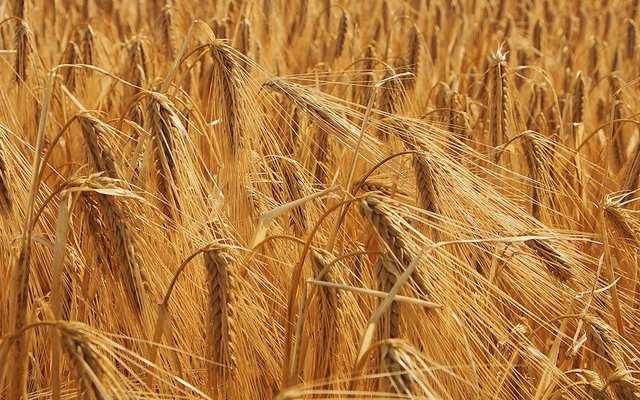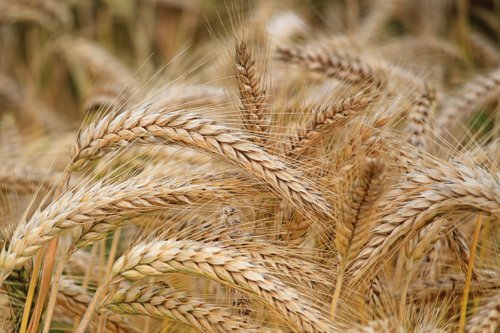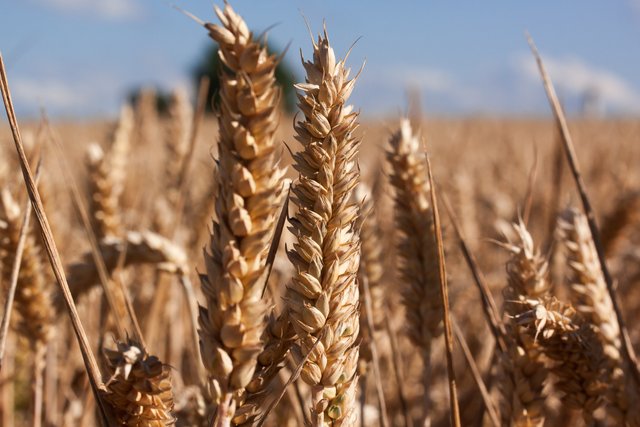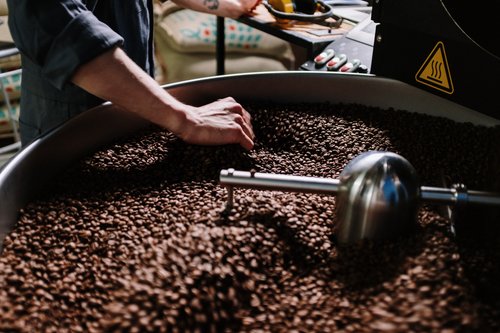
created on Canva
Hello there 👋
Relax… close your eyes and imagine you’re out with friends and a cold giant glass of foamy, freshly brewed beer is served on the table and you’re definitely at the appropriate age for drinking on a weekend hanging out with friends after a very long stressful week at work, it’s refreshing right??
Have you ever thought of the transformation techniques used to create that refreshing foamy cup of beer 🍺 in your imagination?
Ask no more cause I’ll be answering your answers in this blog posts thanks to the opportunity given by the steem for ladies community inspired by @patjewell. So stay tuned and enjoy your beer for my guys…
Process of Beer Production |
|---|
Beer is an alcoholic beverage that starts out from a grass looking plant called barley or malt depending on where it’s been made. Countries like Britain, UK and other European countries use Malt or Barley for making beer because it can be cultivated in their soils meanwhile in other African countries, malt and barley is replaced with corn, and sorghum or millet for producing beer.
Everyday, tons of barley and malt plants are harvested and transported to brewers for transformation into alcoholic beverages and you’d be wondering why but the truth is beer has been consumed from the days of ancient Egypt and then… they used traditional methods for brewing and served to Pharaohs and Kings and even in weddings.
Beer production makes us of many biological processes that usually takes place in the human body such as fermentation, digestion and so on, but with the help of scientific development, aseptic processes can be applied to produce beer industrially.
1. Harvesting
To produce about 12 ounces of beer, one needs up to 3,800 kernels of barley, and annually more than 12 billion ounces is consumed meaning we need trillions of barley kernels to avoid scarcity.To harvest barley properly, it’s good to observe the following features;
- Maturity

Matured barleySource
This is the most crucial part of harvesting which if missed will affect the quality of the grains. When the plant is mature, it losses about 80% of its water content and it turns brown, then you see the plant curving down
- Color/Dryness
The plant gradually turns brown and looks dry but not totally as it loses water, but don’t allow it get too dry as it would be vulnerable to environmental hazards like burning and also parasitic attacks.
There are 2 methods of harvesting which are swathing and straight cutting these processes have different techniques of achieving them as it involves observing the maturity stages very closely and taking the right precautions.
straight cutting
It is a one pass system meaning the whole field will have to be matured at the same time so that no one stem is left after harvesting. It is the desired system to use as it doesn’t expose the barley plants to moisture and environmental hazards. It prevents pre harvest sprouting and other associated risks to moisture.
Swathing
This is the alternative to straight cutting which places the cut barley on the ground before transforming. This exposes it to many risks of moisture and infections making it prune to rejection.
II. Crushing
The harvested barley grains are turned into Must which varies based on the type of beer you want to make. Must is then mixed with water to form mash and this initiates a breakdown process where enzymes break down malt to maltose. The mash is heated to 80 degrees to speed up this process. The mash is then poured and filtered into a pot and kept for some days until the remaining grains don’t settle anymore.
III. Boiling
Right after the mist has been made above, the filtered liquid is put to boil in and hops are added to it. The amount of hops added depends on the tow of beer they are willing to make. During boiling which lasts about 3 hours, all enzymes, microorganisms and chemical processes are destroyed. The mist is filtered and the hops are taken out, the filtered liquid is left to settle and other particles which can’t be removed by the filter are removed by other means.
IV. Fermentation
Boiled mist flows through very large pipes into stainless steel fermentation tanks, the mist is allowed to cool down to 18-22 degrees then yeast is added into the tanks to convert sugars to alcohol. The mixture is allowed for 2 days and constant observation is carried out to maintain temperature and carbon dioxide concentrations. Fermentation stops when the yeast cells convert all sugars to alcohol and you see a foamy deposit formed over the liquid.
V. Maturation
The fermentation process results in a foamy unfiltered liquid which is poured into very large stainless steel tanks and allowed to mature. Maturation is to make sure the alcohol has that fine taste and this takes about 3 months to achieve and the conditions needs to be maintained to avoid false results.
VI. Filteration
Matured beer is filtered again this time through 2 filters, the first which filters very large particles and the second which filters very small particles allowing just the pure liquid beer to flow through.
VII. Bottling
Beer that has been thoroughly filtered is bottled and shipped to selling points.
In Cameroon, the major distributor of beer is Les Brasseries Du Cameroon which sells beer drinks like *Mutzig, Castel Beer, and so on I don’t consume much beer but I know a little about it.

Beers found in Cameroonsource
So now you know how it is made and the time and effort that is put in for that foamy cold cup of beer you see in your imagination. Beer is taken during events of celebration, like big games, weddings, outings, graduations and big events you can think of.
That’s the end of my blog about beers thanks for following up till the end.
Cc:
@chant
@chiabertrand




Thank you, friend!


I'm @steem.history, who is steem witness.
Thank you for witnessvoting for me.
please click it!
(Go to https://steemit.com/~witnesses and type fbslo at the bottom of the page)
The weight is reduced because of the lack of Voting Power. If you vote for me as a witness, you can get my little vote.
Downvoting a post can decrease pending rewards and make it less visible. Common reasons:
Submit
This was such a nice post!
I hope we are going to see you this week with a just as a nice post.
Good luck!
https://steemit.com/hive-168072/@patjewell/contest-and-winners-choices-what-will-it-be-11
PS: Make sure you follow all the rule to the T (•ิ‿•ิ)
Downvoting a post can decrease pending rewards and make it less visible. Common reasons:
Submit
¡Congratulations!
This post has been supported through the account Steemcurator06. for containing good quality content.
Downvoting a post can decrease pending rewards and make it less visible. Common reasons:
Submit